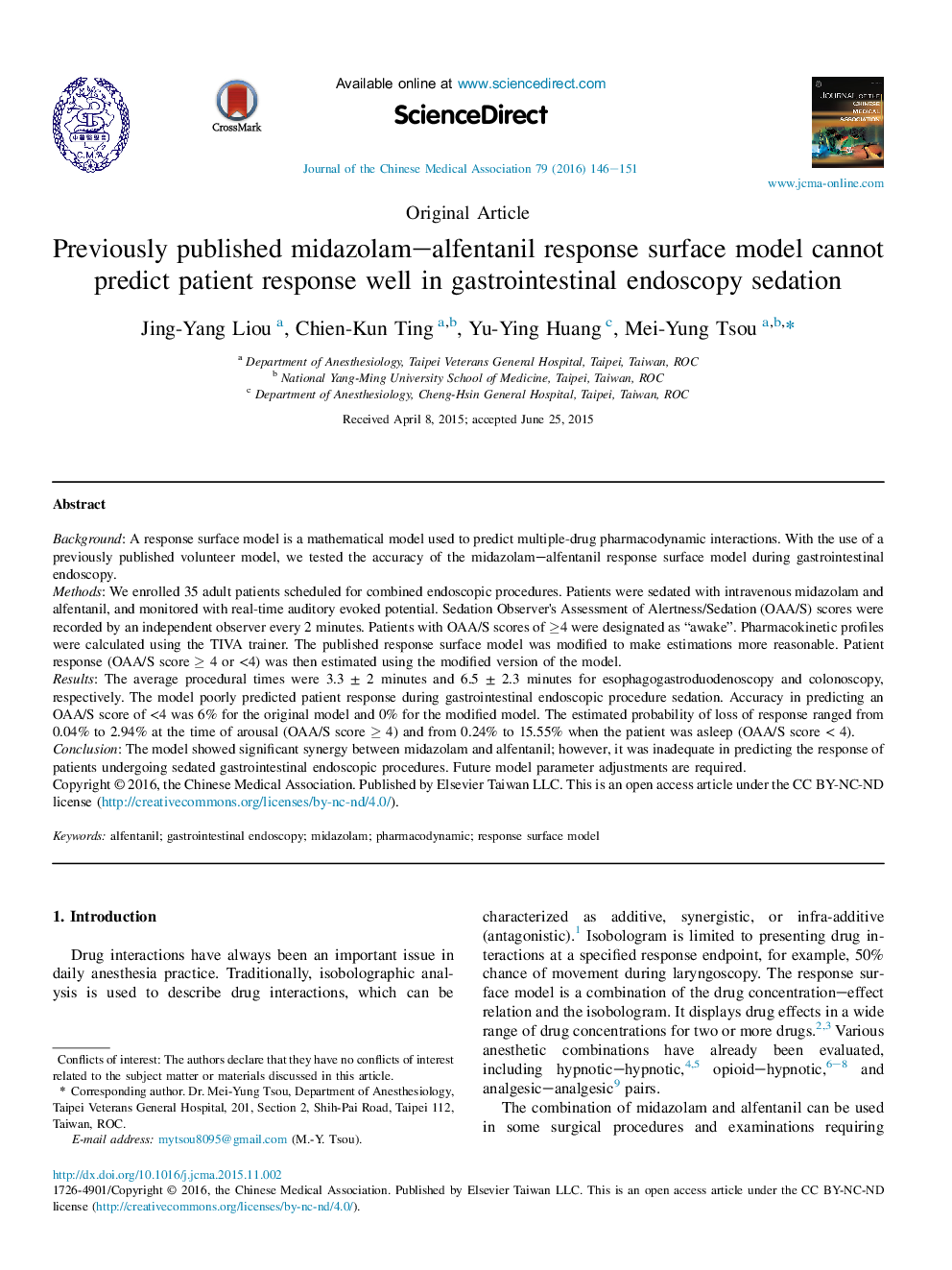| Article ID | Journal | Published Year | Pages | File Type |
|---|---|---|---|---|
| 3475781 | Journal of the Chinese Medical Association | 2016 | 6 Pages |
BackgroundA response surface model is a mathematical model used to predict multiple-drug pharmacodynamic interactions. With the use of a previously published volunteer model, we tested the accuracy of the midazolam–alfentanil response surface model during gastrointestinal endoscopy.MethodsWe enrolled 35 adult patients scheduled for combined endoscopic procedures. Patients were sedated with intravenous midazolam and alfentanil, and monitored with real-time auditory evoked potential. Sedation Observer's Assessment of Alertness/Sedation (OAA/S) scores were recorded by an independent observer every 2 minutes. Patients with OAA/S scores of ≥4 were designated as “awake”. Pharmacokinetic profiles were calculated using the TIVA trainer. The published response surface model was modified to make estimations more reasonable. Patient response (OAA/S score ≥ 4 or <4) was then estimated using the modified version of the model.ResultsThe average procedural times were 3.3 ± 2 minutes and 6.5 ± 2.3 minutes for esophagogastroduodenoscopy and colonoscopy, respectively. The model poorly predicted patient response during gastrointestinal endoscopic procedure sedation. Accuracy in predicting an OAA/S score of <4 was 6% for the original model and 0% for the modified model. The estimated probability of loss of response ranged from 0.04% to 2.94% at the time of arousal (OAA/S score ≥ 4) and from 0.24% to 15.55% when the patient was asleep (OAA/S score < 4).ConclusionThe model showed significant synergy between midazolam and alfentanil; however, it was inadequate in predicting the response of patients undergoing sedated gastrointestinal endoscopic procedures. Future model parameter adjustments are required.
